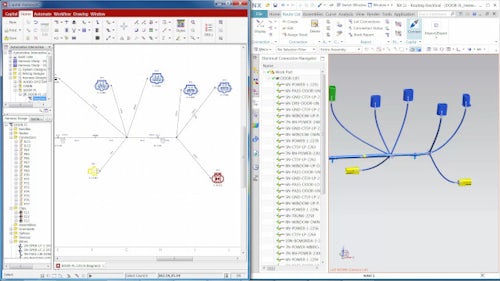CIMdata의 최신 e-book은 NX가 제너러티브 기술을 선도하는 방법을 소개합니다
본 e-book을 통해 다음 내용에 대해서도 알아보실 수 있습니다:
- 토폴로지 최적화 및 컨버전트 모델링 등과 같은 새로운 설계 방식
- 제너러티브 설계의 모든 것
- 반복 사이클
- 제너러티브 설계 사례
CIMdata는 제품 설계에 NX 혁신 기술을 사용해 본 e-book에 소개된 새로운 방식으로 한층 가볍고 강력한 제품을 제작하는 방법을 소개합니다.
Click the link below to download the e-book.
Explore more design options in less time with generative design
Generative design is turning the traditional design paradigm on its head. Conventional design methods rely on a "model then analyze" iterative cycle, but in generative design, the product designer first identifies the necessary design space and design goals. Once initialized, software algorithms do the job of automatically cycling through numerous geometric model permutations seeking an optimum solution based on defined constraints without the need for human intervention. Generative design methods facilitate faster decision-making, and with a given set of conditions, designers can conduct more experiments in much less time than is possible with traditional design methods.
Minimize cost and optimize performance with generative technology
The emerging technology of generative design is gaining interest in product development communities because it creates optimized product designs from requirements and constraints rather than by making the geometry first and then validating. Designs are optimized to objectives like minimum cost and weight when using physics-based simulation and other analysis methods that consider performance requirements. This approach reduces material waste and cost by creating models that require only the material amount needed to meet product requirements.
Utilize topology optimization to reduce material use
The most recognized generative design process is topology optimization. It optimizes material layout within given design spaces for a set of functional requirements, including loads, boundary conditions, and constraints. Typically, the optimization goal is to meet the model's structural strength while minimizing its mass, thereby reducing its weight while saving on material. While most implementations are in prototype study or one-off parts, the future will bring more examples staged in a production environment. Although the future direction is uncertain, Siemens NX software has set the fundamental first stage to support their customers' generative design journey no matter which direction that journey will take.



